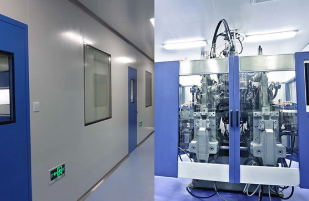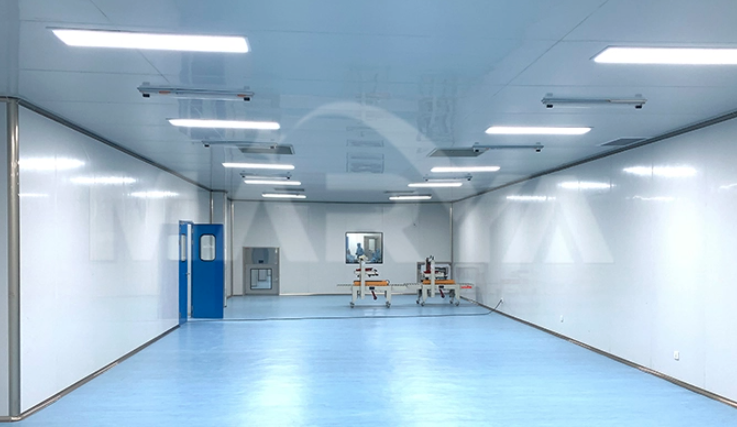Views: 0 Author: Site Editor Publish Time: 2025-08-13 Origin: Site






In today’s highly regulated and precision-driven industries, choosing the right cleanroom system is essential for maintaining product quality, ensuring regulatory compliance, and preventing contamination. Whether you are in pharmaceuticals, biotechnology, electronics, or aerospace, a well-designed cleanroom system can significantly impact your operations. This comprehensive guide will walk you through the key considerations, industry-specific requirements, and practical steps to select the ideal cleanroom system for your needs.
A cleanroom is a controlled environment designed to minimize airborne particles, microorganisms, and other contaminants. It is crucial for industries such as pharmaceuticals, biotechnology, medical devices, electronics, aerospace, and robotics, where even the slightest contamination can compromise product quality and safety. The right cleanroom system ensures that your operations meet the highest standards of cleanliness and efficiency.

Cleanrooms are classified according to the ISO 14644-1 standard, which ranges from ISO 1 (the cleanest) to ISO 9 (the least clean). Lower ISO numbers indicate cleaner environments. The classification is based on the maximum number of particles allowed per cubic meter of air. Below is a table comparing ISO classes, particle limits, and typical applications:
| ISO Class | Maximum Particles per m³ (≥0.5 µm) | Typical Applications |
|---|---|---|
| ISO 1 | 10 | Semiconductor manufacturing |
| ISO 2 | 100 | High-precision electronics |
| ISO 3 | 1,000 | Pharmaceutical production |
| ISO 4 | 10,000 | Biotechnology research |
| ISO 5 | 100,000 | Medical device manufacturing |
| ISO 6 | 1,000,000 | Sterile food processing |
| ISO 7 | 10,000,000 | General pharmaceuticals |
| ISO 8 | 100,000,000 | Low-risk medical devices |
| ISO 9 | 1,000,000,000 | General industrial use |
Different industries have specific requirements for cleanroom classifications based on their operational needs and regulatory standards:
Pharmaceuticals & Biotechnology: Typically require ISO 5–8 to ensure that drugs and biologics are produced in a sterile environment.
Electronics & Semiconductor: Demand the highest levels of cleanliness, often requiring ISO 1–5 to prevent particle contamination that can affect chip performance.
Aerospace & Defense: Often operate within ISO 7–8 to ensure the reliability and performance of aerospace components.
Robotics & Precision Manufacturing: Need ISO 5–7 to maintain precision and accuracy in manufacturing processes.
It is important to understand that a higher ISO number does not necessarily mean a cleaner room. Additionally, it is crucial to differentiate between “at rest” and “operational” classifications, as the latter accounts for the presence of personnel and equipment.
Stick-built cleanrooms are constructed on-site using traditional building materials. They offer several advantages, including lower up-front costs, walkable ceilings, coved flooring, and integration with existing HVAC and plumbing systems. These cleanrooms are ideal for retrofitting existing facilities and can be customized to meet specific industry requirements.
Modular cleanrooms are pre-engineered and assembled from pre-fabricated panels. They offer flexibility, reconfigurability, and shorter installation times. Modular cleanrooms are available in both hardwall and softwall configurations, with transparent or opaque panels, static-dissipative surfaces, and chemical-resistant materials. They are ideal for applications requiring extra-tall spaces, single-use manufacturing, and multiple isolated zones.
Positive pressure cleanrooms are designed to protect the product by preventing contaminants from entering. They maintain higher air pressure inside the cleanroom compared to the surrounding environment. Negative pressure cleanrooms, on the other hand, protect personnel and the environment by containing hazardous substances within the cleanroom. Airflow patterns and fan filter units (FFUs) play a crucial role in maintaining the desired pressure differentials.

Understanding the specific ISO standards, government regulations, and customer specifications for your industry is crucial. Compliance with guidelines such as USP797, USP800, cGMP, GLP, ASTM, and IEST ensures that your cleanroom meets the necessary quality and safety standards.
Assessing your equipment, personnel, material flow, and future expansion needs is essential for designing an efficient cleanroom layout. Key zones to consider include gowning areas, sterilization rooms, and material transfer points. Modular cleanrooms offer flexibility in layout, while stick-built cleanrooms provide custom solutions for unique requirements.
Selecting the right materials for walls, ceilings, and floors is critical for maintaining cleanliness and durability. Common materials include HDPE, FRP, aluminum, and epoxy-coated floors. Windows and doors must also be designed to maintain pressure integrity and withstand cleaning agents and disinfectants.
High-efficiency particulate air (HEPA) and ultra-high-efficiency particulate air (ULPA) filters are essential for removing tiny particles and microorganisms from the air. Airflow patterns, whether laminar or turbulent, significantly impact contamination control. Energy-efficient HVAC systems and variable airflow controls can optimize energy use while maintaining the required cleanliness levels.
LED flat panels, strip lighting, and UV germicidal lights are commonly used in cleanrooms to provide uniform brightness without affecting products or experiments. Power distribution modules for FFUs and lighting should be easy to install and maintain.
Effective contamination control protocols are vital for maintaining a clean environment. These include personnel gowning and PPE, material transfer systems, cleaning schedules, approved cleaning agents, and air quality monitoring.
Regular maintenance schedules and inspections for air quality, filtration, and pressure integrity are essential for ensuring long-term performance. Keeping detailed records of maintenance activities is crucial for regulatory compliance.
Selecting a reputable cleanroom manufacturer or supplier with experience in your industry is crucial. Look for companies that offer modular and custom solutions, comply with ISO and industry standards, and provide comprehensive after-sales support, including maintenance, repair, and upgrades. Turnkey solutions and customizable systems can help you achieve the best balance between cost and functionality.
When it comes to choosing a reliable and experienced cleanroom manufacturer, Shanghai Marya stands out as a leading provider in the industry. With many years of experience, Marya has established itself as a trusted name in cleanroom solutions, offering a wide range of services and products tailored to meet the specific needs of various industries.
Planning for future expansion and scalability is essential for long-term success. Modular cleanrooms offer the flexibility to expand or reconfigure as your production needs grow. Assessing your future requirements and selecting a system that can accommodate these changes will save time and resources in the long run.
Investing in upgradeable HVAC, filtration, and pressure systems ensures that your cleanroom remains state-of-the-art. Smart monitoring systems can provide real-time data on environmental conditions, helping you maintain optimal performance and compliance.
Adopting energy-efficient lighting and HVAC systems, as well as using recyclable and reusable materials, can reduce operational costs while maintaining compliance. Sustainable practices not only benefit the environment but also enhance your company’s reputation and bottom line.
The right cleanroom classification depends on your industry requirements and regulatory standards. Consulting with a cleanroom expert can help you determine the appropriate ISO class for your operations.
Stick-built cleanrooms are constructed on-site using traditional building materials, offering custom solutions for unique requirements. Modular cleanrooms are pre-engineered and assembled from pre-fabricated panels, providing flexibility and shorter installation times.
Common materials include HDPE, FRP, aluminum, and epoxy-coated floors. These materials are chosen for their durability, ease of cleaning, and compatibility with cleaning agents and disinfectants.
Planning for scalability, investing in upgradeable systems, and adopting sustainable practices can help future-proof your cleanroom. Consulting with a cleanroom expert can provide valuable insights into long-term planning and technological advancements.
Choosing the right cleanroom system is a critical decision that impacts product quality, regulatory compliance, and operational efficiency. By understanding cleanroom classifications, selecting the appropriate type of cleanroom, and considering key factors such as layout, materials, and contamination control protocols, you can ensure that your cleanroom meets the highest standards. Consulting with experienced cleanroom solution providers like Marya can provide valuable expertise and support, helping you achieve a controlled environment that meets your industry’s specific needs. Future-proofing your cleanroom with scalable solutions and sustainable practices will ensure long-term success and compliance.
